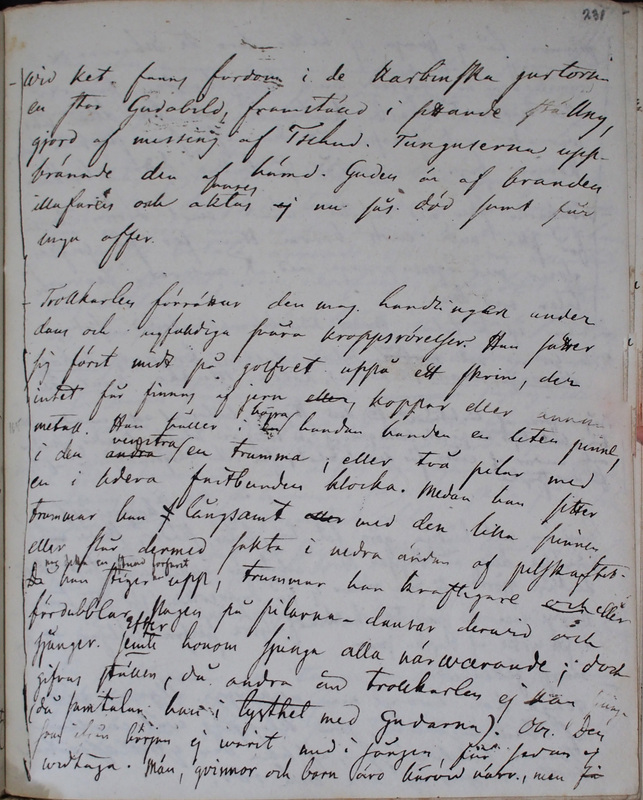Ethnographiska, historiska och statistiska anmärkningar. 231
Title
Ethnographiska, historiska och statistiska anmärkningar. 231
Description
| Wid Ket fanns fordom i de
Karbinska jurtorna
The settlements, consisting of a few log cabins and conical tents, were already called Ru jurty before the Russian colonisation of Siberia. The yurt settlements were contrasted to small towns (Ru gorodok) on the one hand and to taiga and tundra camps on the other. The Karbin yurts are mentioned in late 18th-century sources as one of the settlements of the northern Tobol’sk Tatars. Later known as the village of Karbino, it was closed down in 2013.
en stor Gudabild,
framställd i sittande ställng[ställning],According to Seleznev, Selezneva, and Belič (2009: 101–106), there was an astana of the sheikh Omar Alii in the Karbin yurts. The astanas, burial places of the saints, represent significant Tatar religious places and the local indigenous peoples considered them important, too.
gjord af messeng af Tschud. Tunguserna upp- brännde den af hämd. Guden är af branden illafaren och aktas [anses] nu sås[om]. död samt får inga offer. |
A big image of a god, represented in a sitting position and made of Tschud brass, was formerly found at the Karbin yurts on the River Ket. The Tungus burnt it out of revenge. The god was damaged by the fire and is now considered dead and gets no sacrifices either |
|
Trollkarlen
förrättar den mag[iska]. handlingen underCastrén’s description of a Selkup shamanic séance is one of the first of its kind. See Castrén 2019: 785–789. See also [schamanismen].
dans och mgfalldiga[mångfalldiga] svåra kroppsrörelser. Han sätter sig först mitt på golfvet uppå ett skinn, der intet får finnas af jern eller, koppar eller annan metall. Han håller i en högra handen en liten pinne, i den venstra en trumma, eller två pilar med en i hdera[hvardera] fastbunden klocka. Medan han sitter trummar han i långsamt med den lilla pinnen eller slår dermed sakta i nedra ändan af pelskaftet. [nog detta en stund försent] |
The sorcerer performs his magical acts through dance and multiple difficult bodily movements. He first lies in the middle of the floor on a skin, where nothing may be of iron, copper, or any other metal. He holds in his right hand a small stick, in his left a drum, or two arrows with bells fixed on each. While sitting he slowly drums with the little stick or strikes the lower end of the fur slowly. |
| Då han stiger upp, trummar han kraftigare och eller fördubblar slagen på pilarna, dansar derwid och efter sjunger. Jemti Efter honom sjunga alla närwarande; dock gifvas ställen, då andra än trollkarlen ej kan sjunga. (då samtalar han i tysthet med Gudarna). NB Den som ifrån början ej warit med i sången, får sedan ej widtaga. Män, qvinnor och barn äro härvid närv[arande]., men |
As he rises, he drums more loudly and/or doubles the striking of the arrow, and afterwards dances and sings. All those present sing after him, though there are places where others than the sorcerer cannot sing (then he talks in silence with the gods). NB: Those who have not taken part in the singing from the beginning cannot come along later. Men, women, and children are present, but |

